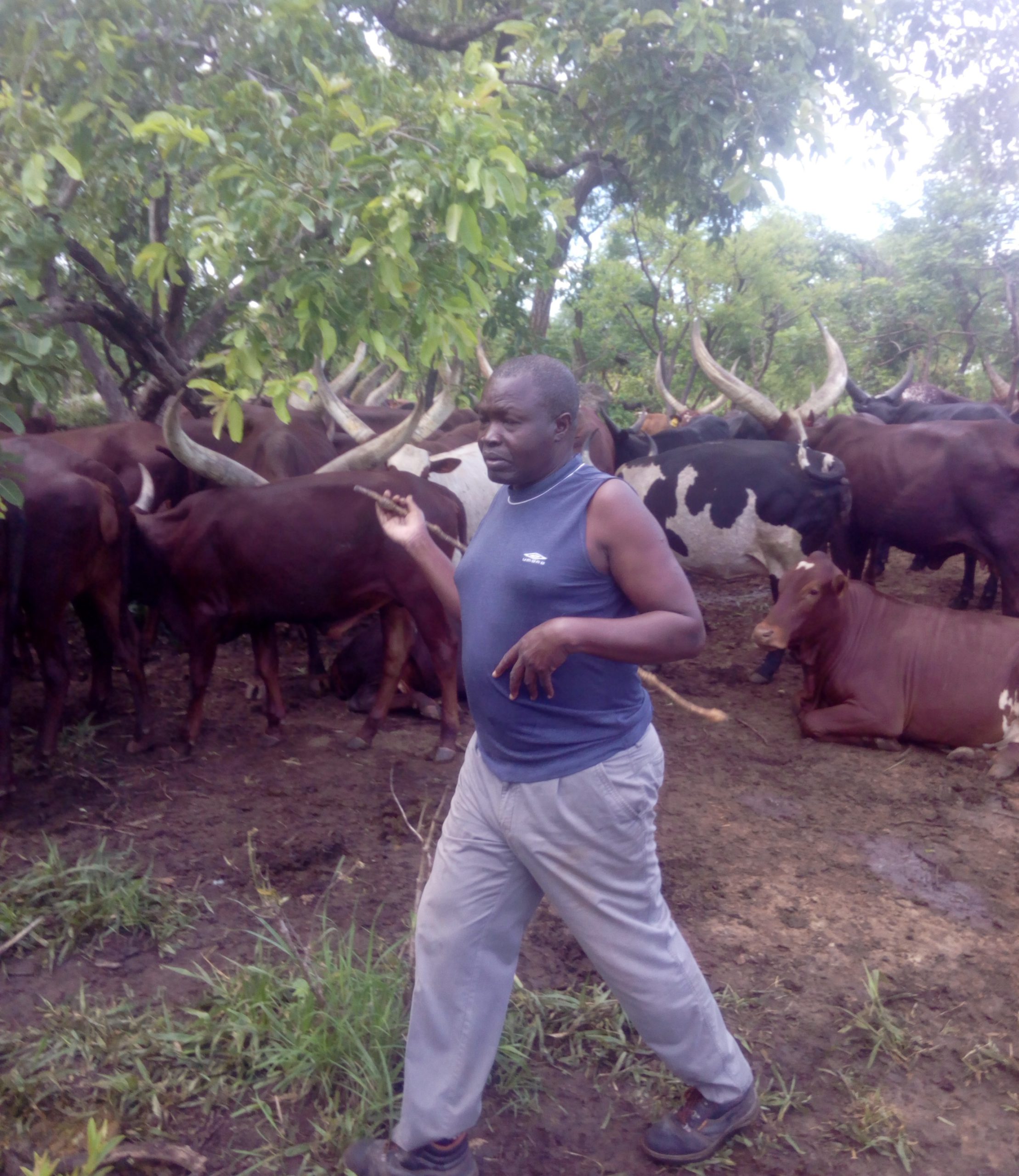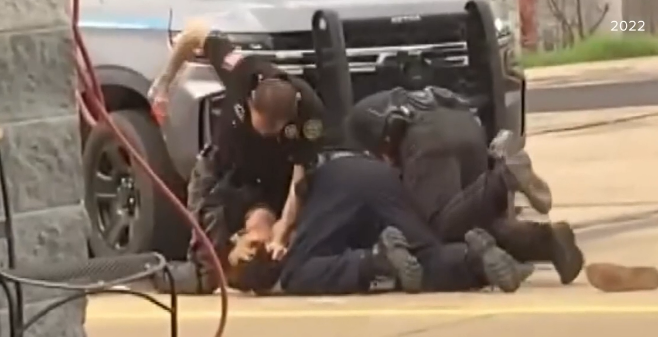Long horned Ankole cattle being bred in Gulu district, replacing local Zebu breed
‘It was not a mere change of guards, but a fundamental change’
“After the deadline of April 22, they will be taken to court. It will be very serious after that deadline. We have enough forces to carry out that operation; which is being supported by a jet-ranger helicopter for air surveillance”
“The picture now is Balalo are going reluctantly. On Monday for instance 78 trucks crossed Karuma Bridge going southwards. They are not supporting going back. Their interest is to have as big herds of cattle as they can, but the issue is; land is not enough. Why don’t you settle; have few herds instead of having big number yet you don’t profit from them”
GULU-UGANDA: When the National Resistance Army (NRA) captured power in January 1986, using the barrel of the gun as their means, Yoweri Museveni, then a young man, is quoted to have said it “was not a mere change of guards, but a fundamental change”, during his maiden speech as president.
Before NRA captured power, the people of the Northern and Eastern parts of Uganda used to have short-horned zebu breed of cattle. These short-horned zebu cattle are now endangered and on the verge of extinction. Why?
It took some months before NRA could cross the bridge at Karuma, which is the natural boundary between the Northern and Southern parts of the country. They had to strategize how to defeat former Uganda National Liberation Army (UNLA) soldiers who had retreated home with their guns when Kampala, the capital, fell to NRA in 1986.
As one of the students in a course to become an intelligence Officer at the time in the previous regime, we were taught strategies to weaken an enemy’s capacity to wage war.
You do this by denying enemies access to territory, food, water sources, infiltrating their front lines to find out their battle plan and movements, plus the use of propaganda (shiasaa). These are the same tactics NRA used in accessing the northern and eastern regions.
During the five-year bloody war to capture power from 1981 to 1986, NRA deployed covert officers from South-Western Uganda in the form of cattle keepers (balalo herdsmen) to the northern and eastern parts of Uganda to spy on the wealth of the population and also recruit enemies of then President Milton Obote in their ranks. The spies came as people looking for jobs of keeping cattle of those who owned large herds.
These Balalo herdsmen left their cattle herding jobs as soon as the NRA took over government in 1986, only to return back to the northern and eastern parts of Uganda leading the new Museveni army; this time in full combat uniform and wielding AK-47 rifles.
It was therefore not surprising that one year later, in 1987, unprecedented looting of cattle began in the northern and eastern parts of Uganda allegedly by Karimojong pastoralists from the north-eastern part of Uganda.
In my village located in Ayuu Anaka Parish in Lamwo district, for example, one of our own sons, a lieutenant by rank in the NRA, visited his parents in the company of a group of Karimojong cattle rustlers he was commanding in 1988. By the year 2000 one would hardly come across short-horned cattle. Instead, there are now long-horned Ankole cattle.
It is equally not surprising that the Museveni regime has so far refused to pay former owners of cattle in northern and eastern regions compensation despite court orders. The regime prefers re-stocking, where government imports exclusively long-horned Ankole cattle instead of the traditional short-horned zebu breed.
A ready market in the northern part of Uganda for Ankole cattle has been created for Museveni’s kinsmen, the Balalo, as a strategy to empower them economically. Most of them believe that if you don’t get rich while Museveni rules Uganda, you will remain poor forever under a new leader when government changes hands.
It is this re-stocking program, which has empowered Balalo herdsmen to sell away their relatively small pieces of land in south-western Uganda, buy Ankole long-horned cattle and move their herds to other regions where they claim they had previously spotted “idle land” in the northern and eastern parts of Uganda to graze their cattle.
These herdsmen use contacts within the Museveni security establishments, including Gombolola Internal Security Officers (GISO) to access land. It has since bred land conflicts within the community and family members.
These GISOs and some Local Council (LC I) chairmen connive with one member of a family without the consent of other members of the family and negotiate renting their family’s land to the Balalo for grazing and burning charcoal thereby causing a lot of conflicts .
Since land conflict was getting out of hand, dictator Museveni decided to establish a Commission of Inquiries in land conflicts. Lady Justice, Ms. Catherine Byamugeirere is leading the commission. Preliminary reports points accusing fingers and security personnel as the leading group fuelling land conflicts.
As 2017 came to a close, President Yoweri Museveni issued a three-month ultimatum for pastoralists to leave the northern and eastern parts of Uganda through an operation code named; ‘Rudi Nyumbani’, Kiswahili phrase for ‘go back home’ , led by the army.
The commander of the Fourth Division of the Uganda Peoples’ Defence Forces (UPDF), Brigadier Emmanuel Kanyisigye, Tuesday March 27, 2018, held a press conference in his office during which he revealed that the deadline expires on Sunday, April 22, 2018.
“After the deadline of April 22, they will be taken to court. It will be very serious after that deadline. We have enough forces to carry out that operation; which is being supported by a jet-ranger helicopter for air surveillance”, says the Brigadier.
“The picture now is Balalo are going reluctantly. On Monday for instance 78 trucks crossed Karuma Bridge going southwards. They are not supporting going back. Their interest is to have as big herds of cattle as they can, but the issue is; land is not enough. Why don’t you settle; have few herds instead of having big number yet you don’t profit from them”, says Brigadier Kanyisigye.
He says over 10,000 animals had crossed Karuma as a result of the operation. There are an estimated over 100,000 heads of Ankole herds of cattle in the eight districts in Acholi sub-region.
Challenges in this operation include three reported cases of Foot & Mouth disease, theft of animals from the community by pastoralists and some of the lower cadre local leaders who have been compromised by the pastoralists.
“Some leaders have been compromised. Some of them have not fenced off their land. They have started to own large herds of cattle. The Balalo tend to hide their animals in the locals’ names. We are consulting over these new issues”, he says.
It is therefore not surprising that poverty index level in Uganda shows that the level of poverty among the people of Central and Western Uganda is not as high as it is in northern and eastern Uganda. They are reaping from the support they rendered to Museveni between 1981 and 1986.
This scenario of the fate of Acholi’s short-horned zebu animal reminds me of what one of Uganda’s leading columnists, Mr. Charles Onyango-Obbo wrote in The Daily Monitor years back about why the Baganda ethnic group, whose staple food is matoke (bananas), is now importing the same from Western Uganda.
M. Onyango-Obbo argued in his column that the Balalo who came to Buganda as farm laborers began taking back home some banana suckers and began planting them too.
They are now exporting matoke to feed the Baganda.
In a similar manner, the people of northern region, the victims of mass cattle theft who have never been compensated, will begin to import short horned zebu cattle from other regions.












